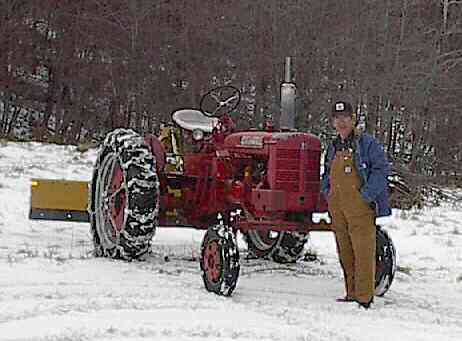Also from experience, I can't recommend
strongly enough that you invest in a small library that will help you maintain
and work on your tractor. At the very least, you need the operator's
manual. This will tell you where the controls are for your
tractor, and have basic but critical information on operation and routine
maintenance, i.e., where to drain and refill the motor oil, where the oil
and air filters are, how your electrical system works . . .
Next on your list, if you find you have a few things that need fixing,
should be a technical manual. I have the Blue Ribbon Service Manuals originally
put out by IH for both my tractors. I also keep a copy of the
I&T Shop Manual, published by Intertec, that covers the letter-series
Farmalls; it overlaps quite a bit with the IH manuals, but each has enough
in it that the other doesn't that it is well worth having. The last is
incredibly helpful if, as I did, you are going to tear into the guts of
your machine to fix something, and that is the Parts Catalog. It has exploded
views of each assembly on the tractor, showing just how things are put
together -- critical information for tearing things down without breaking
hard to find internal parts, and for those times you start to reassemble
something and find you're a little foggy on just how it came apart.
As for sources for these manuals, I can recommend two. Jensales
Tractor Manuals has a broad range of manual reprints for most makes
of tractors. For Farmalls and Internationals, I prefer Binder
Books. Both companies produce reprints of the originals, but I've found
the quality of reproduction (especially in half-tone illustrations) to
be better with the latter.
I'll say it again before I move on. Get the manuals. They're well worth
the modest cost.
